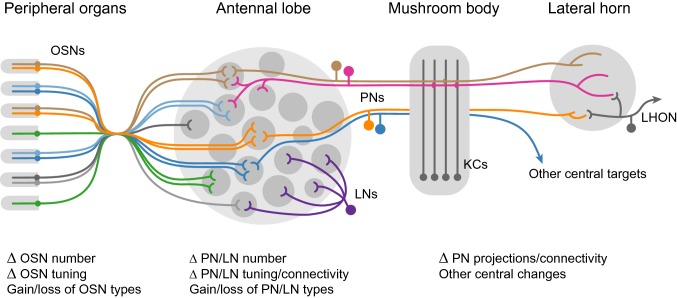Fig. 1.
Basic organization of insect olfactory circuits. Left, olfactory sensory neurons (OSNs) are housed in sensilla scattered across antennae and other peripheral organs. Middle, OSNs send axons to the antennal lobe. All OSNs that express the same ligand-specific receptor converge onto a single glomerulus where they synapse with projection neurons (PNs) and local interneurons (LNs). Most PNs innervate only one glomerulus (brown, orange, blue), but some are multiglomerular (pink). LNs tend to innervate many, if not all, glomeruli (purple). Right, PNs send axons to higher brain centers. Many synapse on Kenyon cells (KCs) in the mushroom body calyx before passing on to the lateral horn (brown, pink). Others project directly to the lateral horn (orange) or other brain areas (blue). Diverse lateral horn neurons, including lateral horn output neurons (LHONs) may integrate information coming from multiple PN populations to drive innate behaviors. Below the diagram, we list a few of the many types of changes that could occur at each circuit level during evolution

